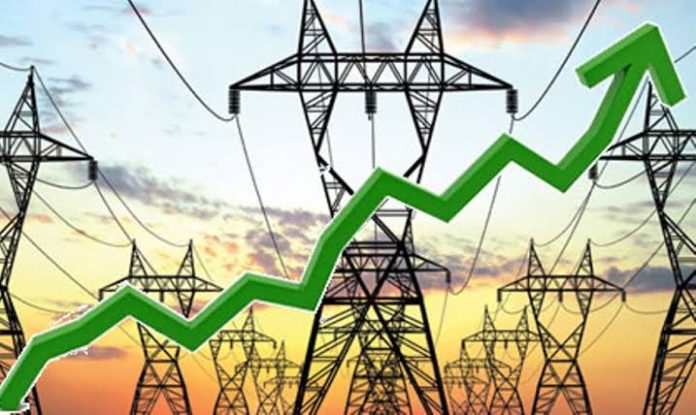The Federal Government, on April 3, 2024, announced an upward review of electricity tariff for customers on Band A, jacking up electricity tariff from N68 to N225 per kilowatt-hour.
The Nigerian Electricity Regulatory Commission, NERC, says the 231 percent tariff increment was only applicable to those who enjoy electricity supply for at least 20 hours per day.
NERC categorises customers on Band A to E with the minimum supply requirement to include: Band A, 20 hours/day; Band B, 16 hours/day; Band C, 12 hours/day; Band D, eight hours/day; and Band E, four hours/day.
Vice Chairman of the commission, Musliu Oseni, at a press briefing explained that Band A customers constitute only 15percent of the 12.8 million electricity customers in the country, and receive 40percent of available supply.
“We currently have 800 feeders that are categorised as Band A, but it will now be reduced to under 500. This means that 17 percent now qualify as Band-A feeders. These feeders only service 15 percent of total electricity customers connected to the feeders.
“The commission has issued an order which is titled April supplementary order and the commission allows a 235 kilowatt per hour.”
What this simply means is that subsidy on electricity has been completely withdrawn from the tariff of consumers on this band category, and it’s only time before same is done to other categories of consumers.
For a while now, multilateral institutions, especially International Monetary Fund,
IMF, have advised Nigeria to remove all subsidies, including the one on electricity so as to reduce financial burden on government.
The Tinubu-led administration seems to have given in to this as the NERC says the increment has become necessary following changes in indices used in setting the tariff earlier in the year.
The official given reason for the hike for the Band A customers is the need to reduce the subsidy paid on electricity by the government. Before the hike, the electricity subsidy for 2024 was projected at N3.13 trillion, which amounts to 10.88percent of the N28.77 trillion budget of the Federal Government.
With the subsidy removal for Band A costumers, NERC says the move would reduce the subsidy to be borne by government in 2024 to N1.14 trillion, which is a whopping 63.58percent reduction in government’s electricity subsidy bill.
Inspite of this, there has been a public outcry against the new tariff regime especially in the face of frequent grid collapse and poor management of power facilities by government the private players.
Only a week ago, the nation was plunged into darkness as the national grid collapsed for the second time in the year. The first happened on February 4.
Data from the Transmission Company of Nigeria indicated that the grid collapsed at about 4:00 pm, on 28 March 2024, and dropped from 2,984 megawatts to zero in an hour, with all 21 plants connected to the grid ceasing operations by 5:00 pm.
Nigeria for decades has been overwhelmed by challenges in the energy sector as a result of an ever-growing population.
According to the Energy Progress Report 2022 released by Tracking SDG 7, Nigeria had the lowest access to electricity globally, with an estimated 92 million of the country’s population lacking access to power.
The organised private sector, the Nigerian Labour Congress, NLC, and the Trade Union Congress, and notable individuals have all kicked against the hike in electricity tariff, demanding that the decision be reversed.
Already, the NLC has told the federal government to prepare for the consequences of the tariff hike, which it described as wicked and unpopular, stressing that since the government preferred to listen to the World Bank and International Monetary Fund, it should be ready to face the consequences.
Head of Information, NLC, Benson Upah, told the media that, “We did say earlier that this tariff hike is insensitive and unpopular. So if the government elects to continue with the hike or persists in something that is evil, I’m sure it is equally prepared for the consequences of that evil.
“The manufacturers are saying this is going to hurt businesses and make the environment more hostile, and we also said so. There is no place in the world where high power tariffs have supported manufacturing. Not even in the developed world.
“So, it completely beats our imagination for the minister to have the audacity to say that the policy would continue. What this means is that the minister and the President are not in charge. It is saddening that the minister elected to pursue an unpopular policy.”
Similarly, the Chief Whip of the Senate Senator Ali Ndume, has rejected the hike, describing the timing as wrong, considering that Nigerians are yet to recover from the removal of fuel subsidy.
Ndume, in a statement made available to newsmen, called on the federal government to reconsider its position in the interest of Nigerians who are currently facing many challenges, including unprecedented inflation, poor purchasing power, insecurity, amongst others.
Agreed that the surge in electricity subsidy should be of concern, as it will further reduce the fiscal strength for the government. However, like Senator Ndume pointed, government must be mindful of the growing angst in the land and not carelessly pushing the country over the edge.
Nigerians are still grappling with the effect of the removal of petrol subsidy and the significant depreciation of the naira. Additional burden will only try the people’s patience.
The question for many Nigerians is who pays for the hours of down time where power is not supplied. Should consumers continue to pay for Band A tariff while they only get services equivalent to that of Band B and C?
It’s sad that 11 years post-privatisation, we are still dealing with a sector in grave distress. Stakeholders have mostly concerned themselves with cost-reflective tariffs, while blaming consumers for not paying enough.
NERC has been adjusting tariffs through its multi-year tariff order. In September 2020, NERC effected a rate hike of close to 100%. There were hikes in 2021 and 2022. Yet the challenges of the sector have lingered.
We believe that it is high time the federal government acknowledged the structural gaps in the electricity sector, as addressing these gaps will inadvertently lead to improved operational and commercial efficiency, and expand the number of consumers served.



